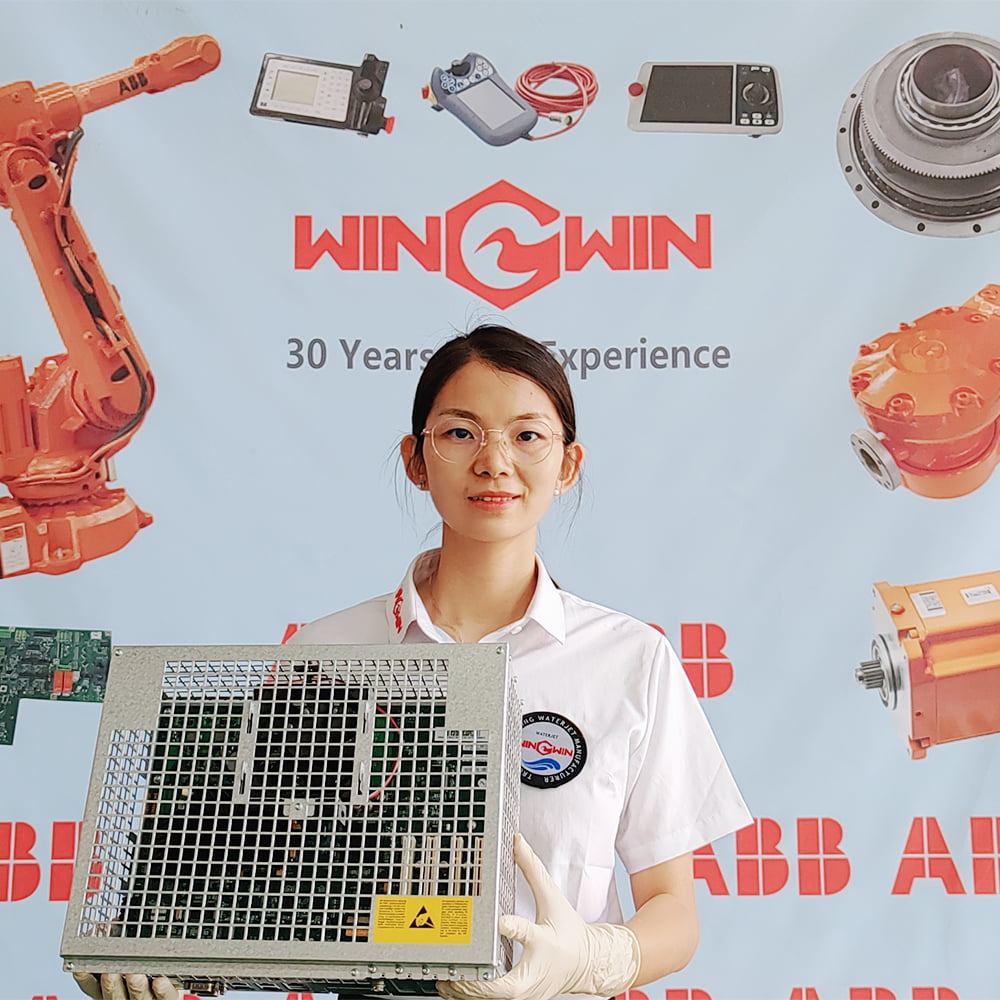Descripción
Piezas de repuesto de ABB Robotics
Item number: 3HAC041443-003 DSQC639
Item name: Computer Unit
Detalles: utilizado en los brazos robóticos de ABB
Win-Win proporciona soluciones de chorro de agua robotizado, piezas de celdas de chorro de agua robotizadas, etc.
Related robot waterjet cutting workstation & Piezas de repuesto para robótica ABB:
Sistema robótico de corte por chorro de agua & Piezas de celdas de chorro de agua para robots: Estación de trabajo robótica de chorro de agua Yaskawa y piezas relacionadas, Estación de trabajo robótica de chorro de agua Fanuc y piezas relacionadas, Estación de trabajo robótica de chorro de agua ABB y Piezas de repuesto para robótica ABB.




FAQ of platform waterjet machine & robot waterjet system & ABB robotics spare parts:
How long does an ABB robot last?
ABB is a world-renowned manufacturer of industrial robots, and its robots are used in many different manufacturing industries. In general, the lifespan of an ABB robot is affected by a number of factors, including work intensity, environmental conditions, and maintenance levels.
Under standard working conditions and normal maintenance, most ABB robots are typically designed to last around 15-20 years. However, this does not mean that the robot can no longer be used after this time, only that the robot may require more frequent maintenance, part replacement or upgrades.
Here are a few key factors that affect the service life of an ABB robot:
Maintenance: Normal and regular maintenance can greatly extend the life of a robot. This includes lubrication, calibration, parts inspection and replacement.
Intensity of work: Whether the robot is working continuously or not, and whether the workload regularly reaches its design limits, are all factors that can affect its life expectancy.
Work environment: Working in dusty, hot, wet or corrosive environments may accelerate robot wear.
Operating loads: Continuously operating a robot at its upper load limit may cause early wear.
External shocks and interference: If the robot is subjected to shocks or frequent external interference, its life may be shortened.
Technology upgrades: As technology advances, some older robots may no longer meet the latest production requirements, even though they are still inherently functional.
Finally, many components may still be intact even after the robot has reached the end of its design life. In some cases, it may be more economical and practical to upgrade or rebuild than to purchase an entirely new robot.






